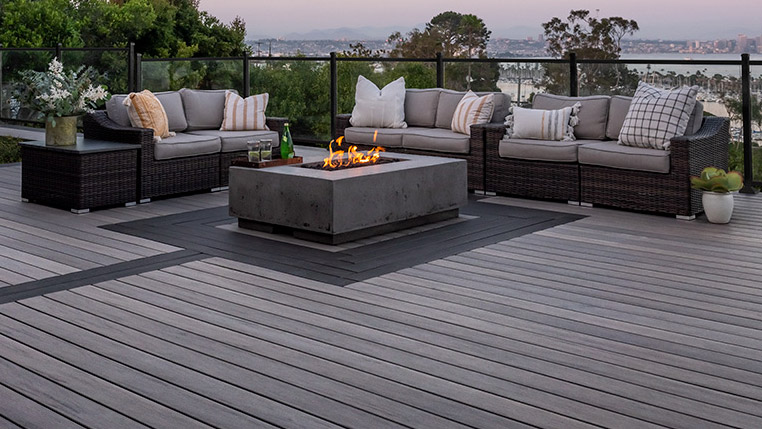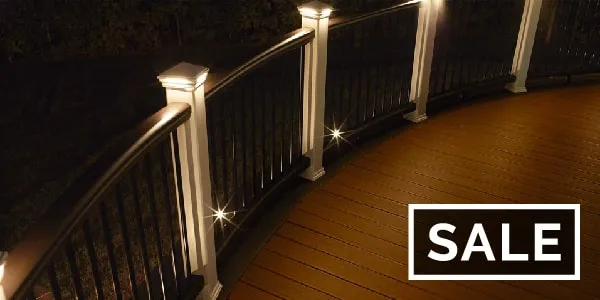See How Easy It Is To Clean & Maintain Composite Decking
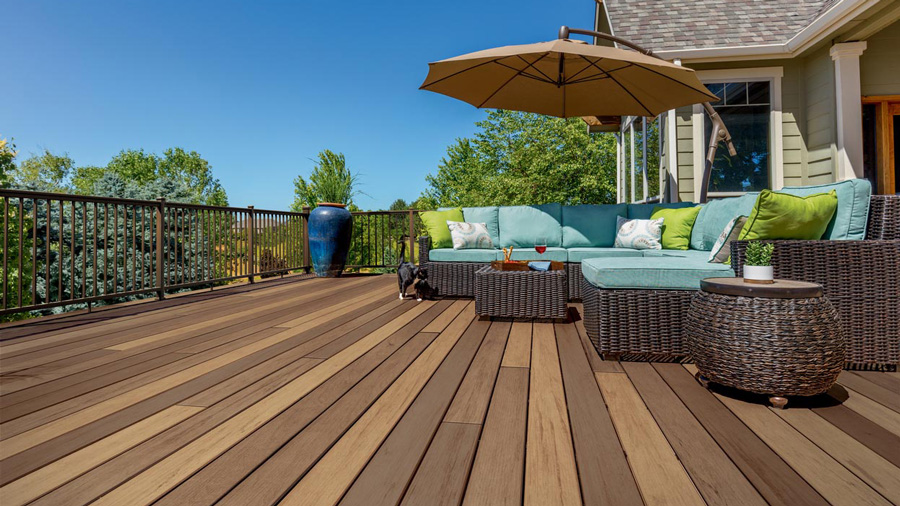
Building a deck is one of the best upgrades you can give your home. It’s a great way to incorporate an indoor-outdoor feature into your house while boosting its overall appeal. If you plan to sell your house, a home deck’s return on investment ranges from 70% to 80%.
Composite decking is among the most popular ways to build a deck. It’s an amazing alternative to a wooden deck that saves a lot of time, sweat, and money in maintenance over the lifespan of your deck.
In this guide, we’ll talk about composite decking, why it’s a great choice, and how to maintain it properly.
Table of Contents
- What Is Composite Decking?
- Composite Decking Maintenance 101
- Cleaning and Maintenance Tips for Composite Decking
- How to Deal with Composite Decking Scratches, Stains, or Damage
- 3 Long-Term Benefits of Proper Composite Decking Maintenance
What Is Composite Decking?
Composite decking is a modern and eco-friendly alternative to traditional wood decking. It’s designed to provide a durable and low-maintenance outdoor flooring solution. Composite decks are a clever combination of materials, carefully engineered to offer the best of both worlds – the natural look and feel of wood and the superior performance of advanced technology.
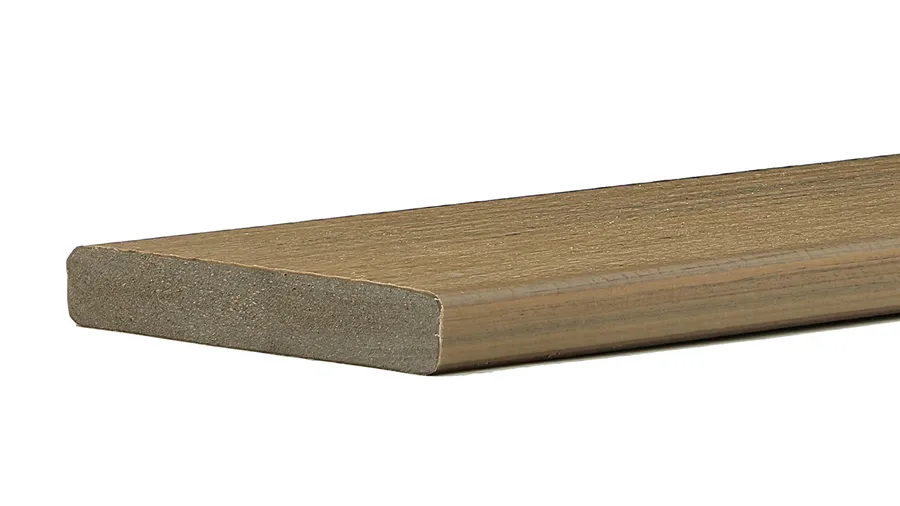
Composite deck boards blend recycled wood fibers and high-quality plastic polymers. This fusion creates a robust and weather-resistant material that can withstand the elements without fading, splintering, or warping over time. And because it sources from recyclable materials, composite decking also contributes to a more sustainable approach to outdoor construction.
3 Different Types of Composite Decking
Not all composite deck boards are created equal. They vary in material and form, with different qualities of plastic mixed with standard wood, bamboo, or rice husk. Some composite decking products also incorporate additional features, such as protective coatings and textured surfaces, further enhancing their quality and aesthetics.
When you shop for composite decking, here are the most common options you’ll come across:
1. Capped or Uncapped
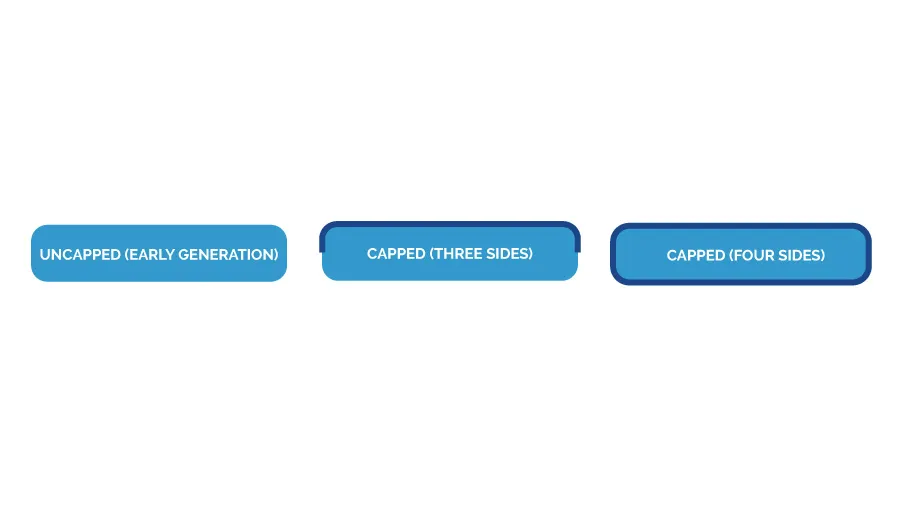
Capped composite decking features a protective external layer, typically made of durable polymer. This acts as a barrier against moisture, stains, and UV exposure, ensuring the deck's longevity and resistance to fading.
Meanwhile, the uncapped composite decking lacks this outer shield. It’s the more budget-friendly option while still providing the essential benefits of composite materials.
Early composite boards were often uncapped, and if you have an older composite deck with some scratches, it's likely using uncapped boards. Capping technology has improved dramatically, and every deck board DecksDirect sells is capped on at least three sides for maximum longevity. Some extra-premium deck boards, like TimberTech's composite decking or Fiberon Concordia decking, are capped on all four sides for the best resistance to the elements.
2. Grooved or Square
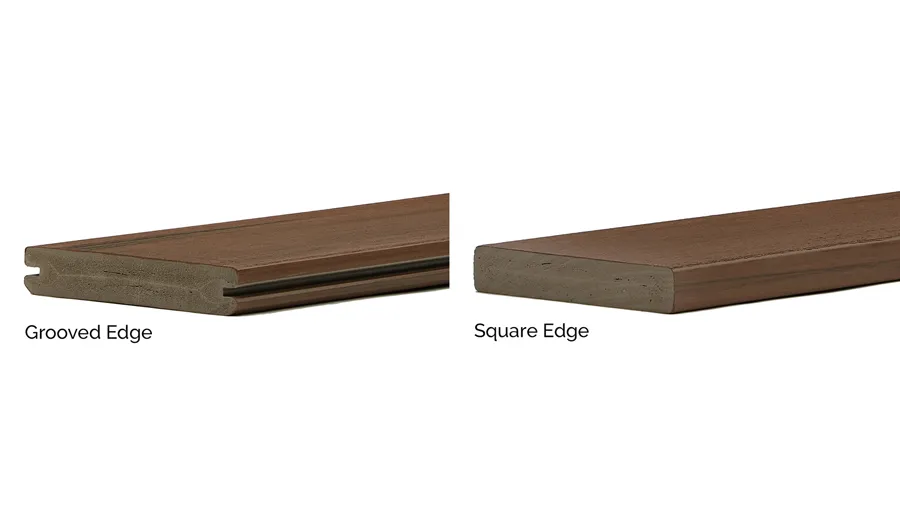
Grooved composite decking boards sport pre-cut grooves on the sides. This lets you use hidden fasteners for a more seamless and clean deck surface.
In contrast, ungrooved or square-edge composite decking requires you to use nails and screws for installation. These boards are best around the outside of your deck or other places where you'll see the edge of the boards.
3. Solid or Scalloped
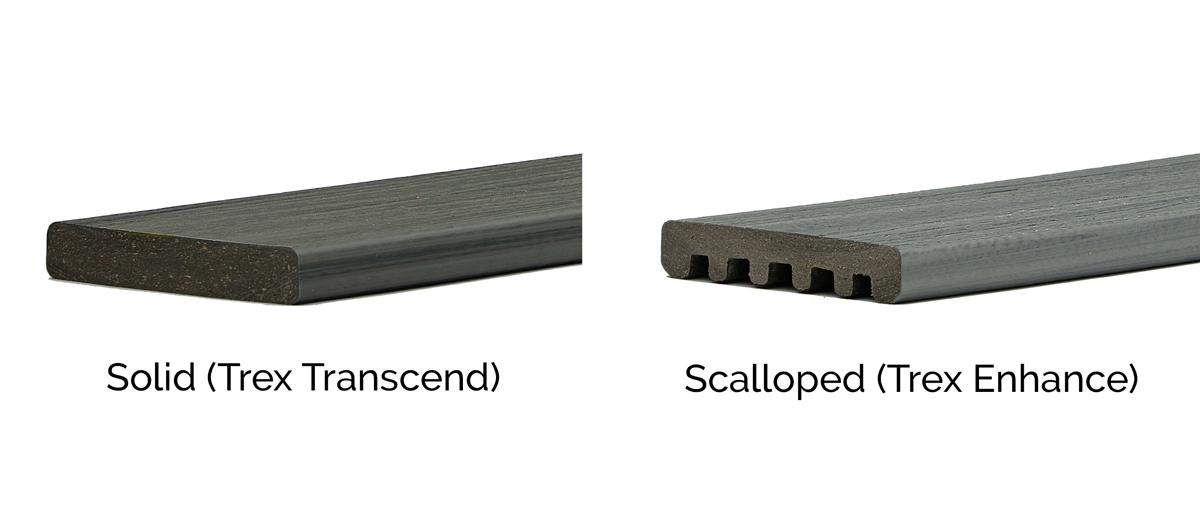
Solid composite decking boards offer robust deck foundations. They'll give you the best strength, and are also ideal for decks where you can see the underside of the deck boards.
On the other hand, scalloped composite decking (sometimes called fluted composite decking) features empathy channels underneath each board. This significantly reduces the weight and material usage. Despite being lighter, they’re sturdy and cost-effective. One downside: you can't use a scalloped deck board as a drink rail on top of a railing.
4 Benefits of Choosing Composite Decking
Here are some pros on why you should consider a synthetic alternative for your home deck project:
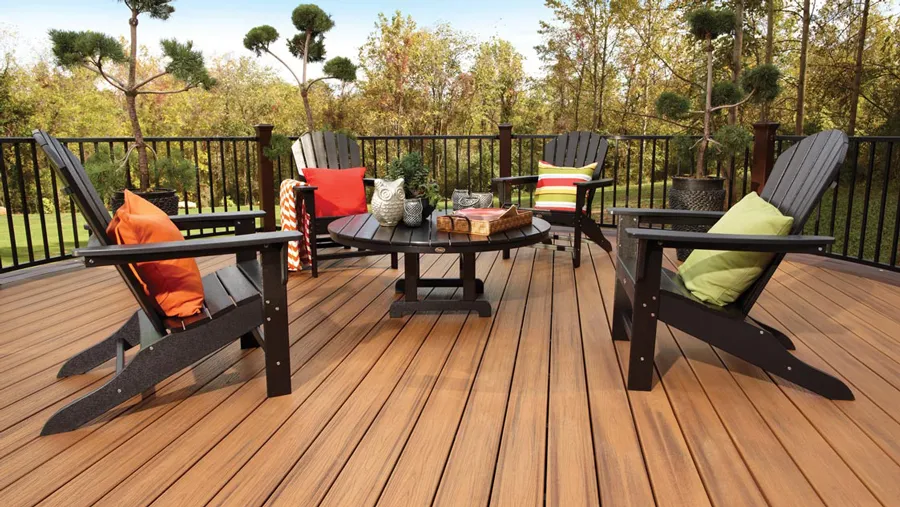
1. It’s Durable and Long-Lasting
When it comes to standing the test of time, composite decking emerges as a clear victor. It’s designed to endure diverse weather conditions without warping or cracking. It also sets you free from the greatest enemy of wood — termites. Its incredible resistance to rot, mold, and pesky insects guarantees that your outdoor oasis remains in stellar condition for years to come. You can confidently host gatherings, knowing your deck will maintain its structural integrity and visual appeal through the seasons.
2. It’s Easy to Maintain
You don't have to endure long hours of laborious and sometimes pricey deck maintenance. The composite decking’s low-maintenance nature is a huge load off your back.
Wood demands regular sanding, staining, and sealing. Composite decks only require simple soap and water cleaning routine to keep it pristine. You get to enjoy your outdoor space more instead of worrying about the tedious task of maintaining it.
3. It’s Versatile
Elevate your outdoor aesthetics with the myriad of design possibilities that composite decking offers. Achieve your dream deck with a wide range of textures, colors, and finishes available for you. You can go for the classic wood-like appearance or go for a more modern and sleek finish. And because composite materials are resistant to fading, your deck’s vibrant hue and shine will remain for a long time.
4. It’s Sustainable
Most composite decking products are made of recycled materials, such as reclaimed wood fibers and plastic. So if you’re worried that a composite deck board’s synthetic material isn’t eco-friendly, that’s simply not true. Opting for composite over traditional wood also reduces the demand for new timber.
Composite Decking Maintenance 101
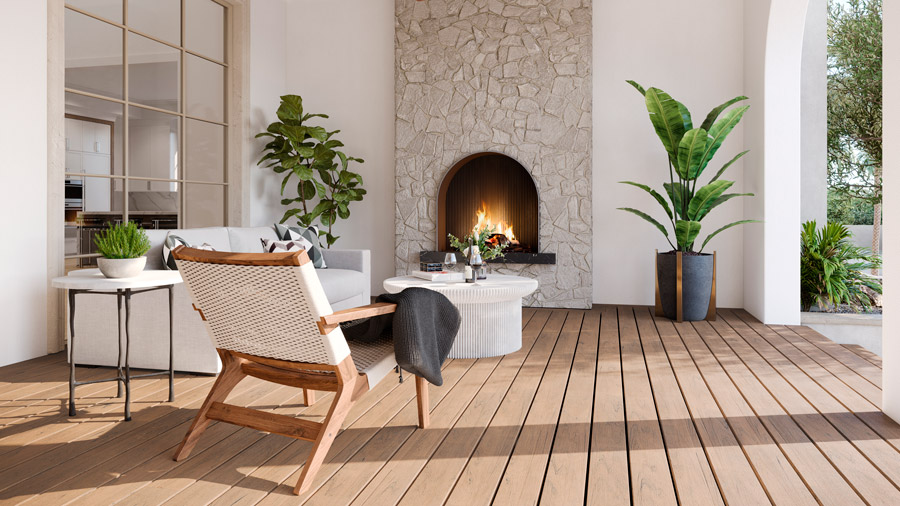
Because your deck is outdoors, it'll be exposed to much harsher elements than any of your indoor living spaces. Composite decking weathers those elements much better than wood, but it'll still take a small amount of regular maintenance to keep your deck looking great and to maximize its lifespan.
Regular maintenance is the key to ensuring your composite decking remains attractive and functional. Dedicating time to proper upkeep enhances its sturdiness, maintains its structural strength, and maximizes its longevity. It also protects from discoloration and surface damage to retain its original charm.
How Often Should You Maintain It?
The frequency of maintenance largely depends on factors like climate, usage, and deck location. Homes in regions with harsher weather conditions, such as excessive sun exposure or high humidity, may need to maintain their decks more frequently. Similarly, decks that receive more foot traffic or get spilled on often should schedule more clean-ups.
Generally, we recommend a thorough composite deck cleaning at least twice a year. However, it’s essential to inspect your deck periodically. This addresses problems like visible stains, dirt, and damage pronto. Early intervention prevents minor issues from escalating into more significant problems down the line.
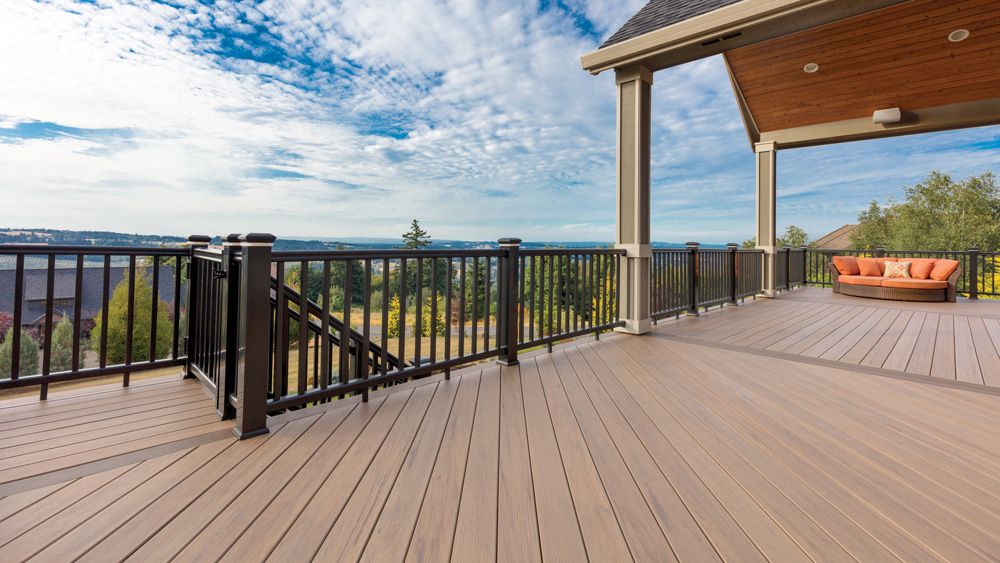
What Maintenance Tools to Use?
Maintaining a composite deck is a breeze when equipped with the right tools. Here are some tools to get started with:
- Soft-bristled brushes: Use these brushes for routine cleaning to remove debris, dirt, and surface stains without scratching or damaging the composite material. You can also use soft pads or clothes to wipe any filth away.
- Mild cleaning solutions: Use gentle, non-toxic cleaning solutions or specially formulated composite deck cleaners to remove stubborn stains or grime. The easiest option is mixing warm water with a standard dish soap like Dawn.
Can I Use A Pressure Washer On Composite Decking?
That depends on your specific composite deck boards. You generally shouldn't pressure wash older, uncapped composite deck boards - the pressure can damage the boards and void your warranty.
Newer, capped composite boards are tougher and can handle a gentle pressure washing - just make sure to follow the manufacturer's instructions or you can risk damaging your boards or voiding your warranty.
Never use a pressure washer on a high-pressure setting. (Trex recommends staying below 3100 psi when cleaning its boards, for example).
Make sure to use a fan-tipped nozzle and keep the nozzle of your pressure washer at least 8 inches away from the decking surface at all times.
Cleaning and Maintenance Tips for Composite Decking
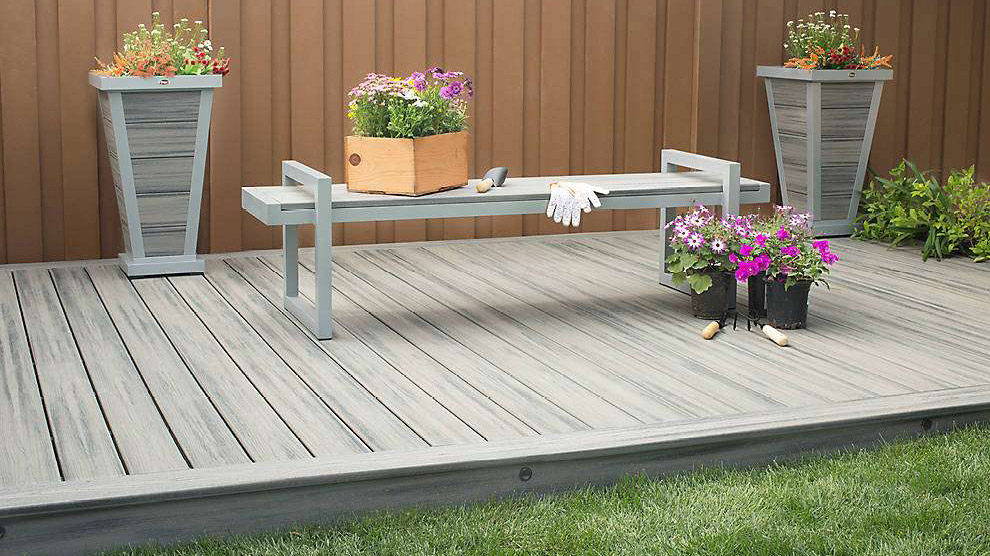
Now let's dive into the best practices for keeping your composite decking in great shape for the long haul. Luckily, the maintenance tasks are pretty easy - and take far less time than staining or sealing wood deck boards:
1. Sweep Your Deck Regularly
While you can schedule your deep deck cleaning twice a year, you should do this as often as possible. Sweep your deck regularly with a soft-bristled broom to prevent the accumulation of leaves, dirt, and any loose debris that may lead to permanent stains.
2. Avoid Using Bleach or Harsh Chemicals
While using strong chemicals for quick results may be tempting, avoid harsh substances like bleach or chlorine-based cleaners. Abrasive cleaning agents can cause irreparable damage to a composite material. For routine cleaning, create a solution using mild soap and warm water. This will effectively clean off any remaining dirt or smudges without ruining your deck boards.
3. Clean Spills Immediately
Accidents happen all the time. Rather than stress how to prevent spilling on your composite deck, take swift actions to prevent any stains instead. Immediately blot a spill with a clean cloth or paper towel if a spill occurs. Remove the residue by rinsing the area with soap and gentle soap.
4. Use DIY Cleaning Solutions
There are tons of cost-effective DIY cleaning solutions that you can try for different kinds of dirt. For example, mix white vinegar and water in equal parts to address mildew and mold. You can also sprinkle baking soda on grease and oil stains and rinse them with water.
5. Go Easy on the Pressure Washer
It’s tempting just to turn on your pressure every time you clean your deck. A pressure washer is a good-to-have item, but this shouldn’t be your only cleaning tool. The force from the water isn’t good for your composite deck. It’s safer to stick to manual cleaning methods. If you must use one, maintain a safe distance and set it to a lower pressure to prevent potential harm.
While pressure washers can be used on some composite decks with a low-pressure nozzle, it's generally safer to use manual cleaning methods to avoid damaging the surface. If using a pressure washer, maintain a safe distance and low pressure to prevent potential harm.
How to Deal with Composite Decking Scratches, Stains, or Damage
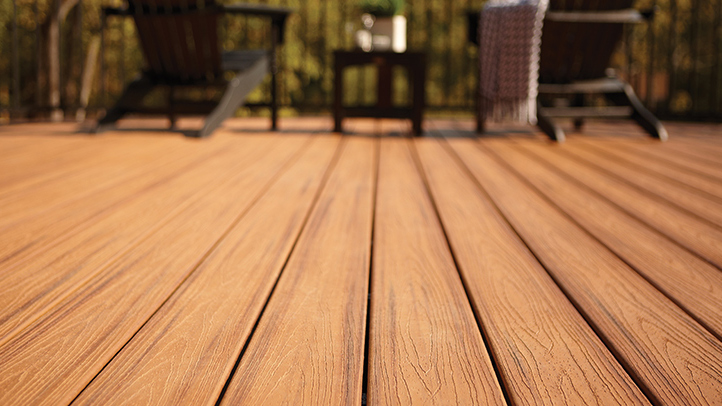
No matter how careful you might be, you’d find yourself facing next-level damage and dirt on your composite decking. It’s essential to be proactive in identifying and resolving issues that may occur at any time.
Below are some insights on addressing scratches, stains, and damages on your composite decking.
Pay Attention to Minor Scratches and Stains
No matter how small an issue these may be, they may incur bigger problems later on. Get to them as early as possible. Gently assess minor scratches and stains. If the damage is shallow and only affects the surface, consider using a touch-up kit specifically designed for composite decking. It prevents them from spreading and becoming more noticeable, keeping your deck looking flawless.
Promptly Repair Scratches and Stuck Smudges
Mild soap and water might not be enough to remove stubborn scratches and deeper stains. Ask composite deck repair products for a rescue. These specially formulated products can help minimize the appearance of damage and restore the deck's surface.
Get Professional Assistance
It's best to get expert assistance when dealing with composite decking damage, such as severe scratches or deep structural issues. Professional deck repair services have the expertise and tools to handle complex repairs while ensuring your deck is in great condition.
Put Preventive Measures in Place
There are several ways you can protect your deck investment. This includes regularly checking your deck for damages or potential issues, regularly sweeping and wiping its surface, avoiding harsh materials, and more.
3 Long-Term Benefits of Proper Composite Decking Maintenance
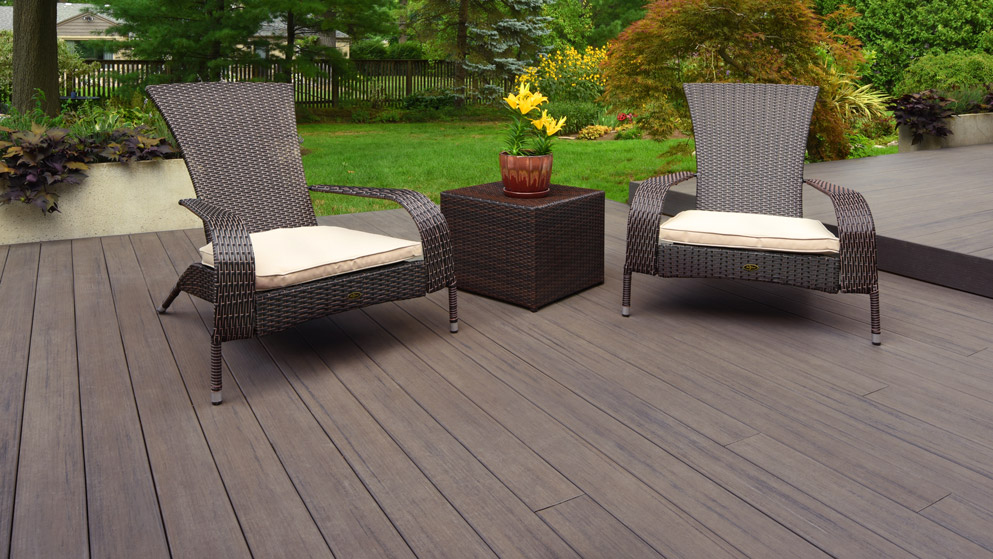
Your composite deck is more than just an outdoor space; it's an extension of your lifestyle. It’s only right that you give it the best care possible.
Here are the lasting perks of investing time, effort, and resources for proper composite decking maintenance:
1. Prolong Your Deck's Lifespan
Routine cleaning, prompt damage control, and preventive measures shield your deck from deteriorating. These ways keep it resilient against elements and will continue to grace your outdoors with beauty and functionality.
2. Save on Costs
Pointing out issues early on translates to substantial cost savings in the long run. You’d essentially avoid expensive repairs and even deck replacements. Its durability and low-maintenance nature also pay off over time. Your deck will retain its allure without needing costly treatments, staining, or sanding, allowing you to enjoy your outdoor haven without breaking the bank.
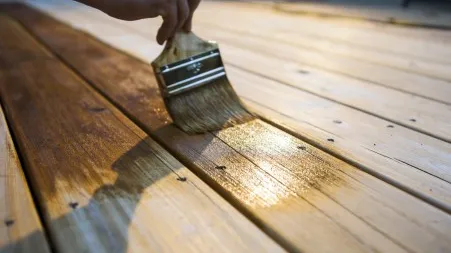
3. Enhance Property Value
If selling your property is in your future plans, a beautiful and well-maintained deck will be an edge. Homes with decks typically have a higher resale value compared to those without one. The additional outdoor space and amenities make the property more desirable and appealing to potential buyers. Decks also boost a property’s curb appeal, adding charm to the home’s exterior.
Keep Your Composite Decking Spotless
If you want a deck that will save you hours of backbreaking maintenance over its lifespan, go for composite decking. It’s the perfect blend of durability, resilience, and aesthetic appeal. You can return to this guide to help keep your composite decking in its best condition.
Need professional help planning a deck build, renovation, or repair? Call an experienced DecksDirect project planner today at 1-888-824-5316.
You can also shop the industry's largest in-stock selection of composite deck boards to find your perfect look!
Shop Composite Decking